Engineering future mobility
37th FISITA World Automotive Congress discusses how automotive engineers will be the movers and shakers of mobility. Interview with Arvind Balaji.
L-R: Murli M Iyer, global advisor, SAE International; N Balasubramanian, DVP, Product Engineering, Renault Nissan Tech & Business Centre India and global advisor, SAE International and FISITA Americas; Arvind Balaji, JMD, Lucas TVS; Dr Aravind S Bharadwaj, CTO, Farm Equipment Sector, M&M;
Dr Pawan Goenka, MD, M&M; Dan E Nicholson, president, FISITA and VP, Global Propulsion Systems, GM; MM Murugappan, chairman, Murugappa Group and Chris Mason, CEO, FISITA.
For an industry taking on disruptive technologies, automotive engineers will be the movers and shakers of mobility. The 37th FISITA World Automotive Congress, held in India for the first time, saw plenty of discussion and debate, technical seminars, student and young engineer activities, all with an aim to share and expand knowledge.
The first week of October 2018 was a momentous one for India and the automotive industry. That’s because the 37th FISITA World Automotive Congress – a congregation of international automotive leaders and experts – was held in Chennai from October 2-5. It was the first time the biennial industry event, first organised in 1947 in Paris, was held in India, which speaks volumes for the country’s growing status in the global automotive scheme of things. SAE India, the local arm of SAE International, hosted the four-day event at the Chennai Trade Centre on the theme of ‘Disruptive Technologies for Affordable and Sustainable Mobility’. SAE India, with a membership base of over 50,000, is the biggest affiliate of SAE International.
FISITA or the International Federation of Automotive Engineering Societies has 37 member bodies globally. With disruptive technologies in the auto industry gaining significant momentum and India being a hub for IT and software development, the event essentially was meant to enable participants from all across the world to not only exchange ideas but also brainstorm challenges and changes that these new trends offer. And it proved to be an engineering tech tour de force, what with 400 delegates, 90 exhibitors and over 1,500 visitors.
India, which is set to surpass Japan as the global No. 3 passenger vehicle market by 2022, and is the No. 1 in motorised two-wheelers, clearly was the undisputed destination of choice for 2018 FISITA. It was in September 2016 that the FISITA organisers confirmed Chennai as the venue for the global event. The capital of Tamil Nadu was a good fit considering it is the preferred automotive and R&D hub in India and a stronghold of both vehicle manufacturers and component suppliers. Chennai and its Oragadam belt is from where OEMs like Hyundai Motor India, BMW India, Renault and Nissan, Ashok Leyland, Daimler India Commercial Vehicles, Royal Enfield and TVS Motor Co roll out their products. What’s more, being an engineering hub with rich local talent as well strong industry-academia connect, it was not surprising this year’s FISITA saw a packed house on all four days with 1,600 visitors, well over its 1,500 closed registrations limit, thronging the show.
Dr Pawan Goenka: "Disruptive, affordable and sustainable are the new key trends in the auto industry and engineers are working strongly towards developing such technologies."
With global industry tackling a plethora of disruptions, the likes of which have never been seen before, the programme at FISITA included plenary sessions from luminary industry personalities, as well as a slew of technical seminars on varying topics such as engine and transmission design, NVH, electric vehicle development, vehicle safety and autonomy among others, conducted by industry experts in their respective domains.
FISITA 2018 was also the ideal forum for companies to showcase their latest advances and industry did not disappoint. Nearly 90 exhibitors including carmakers BMW, Toyota and Nissan wowed with their latest technological advancements on the EV front; component majors like AVL, Bosch and Continental revealed their breakthrough technologies for vehicle electrification; and testing equipment suppliers such as ATS, IDIADA, iASYS and Faro along with software majors Dassault Systemes and PTC gave a hint and more of how they can support ADAS (Advanced Driver-Assistance Systems) and EV validation. There was also participation from leading colleges of the likes of IIT Madras, Hindustan Institute of Technology and Vel Tech showing how young talent is being nurtured at these institutions to make them industry- and future-ready.
Excellence in mobility engineering
Having been instrumental in establishing SAE’s India chapter and being a patron to the FISITA 2018 World Congress, Dr Pawan Goenka, managing director, Mahindra & Mahindra, who won the 2016 FISITA Medal of Honour – which is awarded to an individual for distinguished achievements in automobile engineering – and the sole Indian to get this prestigious recognition, kicked off the global event.
FISITA president Dan Nicholson: "Automotive engineers are relentlessly working towards developing and refining life-saving safety systems and technologies.”
Dr Goenka, who is a true-blue automotive engineer, said, “Disruptive, affordable and sustainable are the new key trends in the automotive industry and engineers are working strongly towards not only developing such technologies but also wholly encompassing business models which are disruptive at the same time. While which technology emerges as the inanimate solution going forward is yet to be seen, what is plausible is the collective effort of the industry towards moving in a direction of sustainable future.”
“The FISITA Congress is a unique conglomerate of technical leaders at a single place and, given its talent, India is set to bring immense value to the automotive community,” Dr Goenka added.
He said that the FISITA team had worked hard to handpick the technical programmes listed for students, researchers as well as working professionals. He added that the auto industry is undergoing a metamorphosis with mobility set to be transformed with CASE (Connected, Autonomous, Shared and Electric).
The FISITA nominations committee conferred this year’s honour to Dr Akihiko Saito, chief engineer at Toyota Motor Corporation, and the man behind redesigning the sixth and seventh generations of the Toyota Corolla sedan, making the car a global best-seller. While Saito’s diligent efforts also saw him take the company into the world of motorsport, Saito now serves as an advisor to the Japanese automaker.
Dan E Nicholson, president, FISITA, and vice-president, Global Propulsion Systems at General Motors, said, "The automotive industry is in the midst of a serious transformation and technologies such as Artificial Intelligence (AI) and Internet of Things (IoT) are dramatically changing the way how projects are conceived, built and delivered." He also championed the cause of road safety and added, “With over 1.3 million road fatalities happening every year majorly due to human negligence, active safety systems, as well as autonomous driving technologies, are the solutions towards improving the current scenario. Automotive engineers are at the forefront and relentlessly working towards developing and refining such lifesaving safety systems.”
The handsome, all-electric BMW i3 hatchback offers a green motoring range of up to 183 kilometres on a single charge.
Tier 1 supplier Lucas TVS’ joint MD, Arvind Balaji, who presided as the guest of honour, said that the automobile industry is experiencing a four-fold phase of disruption in the form of CASE. While full vehicle electrification is still some time away, IC engines are going to stay in the picture until 2030. “The foreseeable future will see a combination of a mix of propulsion technologies including hybrids, electrics and fossil-fuelled vehicles.”
“With a need to conform to BS VI and CAFE (Corporate Average Fuel Economy) norms, we have to continue investing more in technology, as well as capacities to be able to cater to the growing needs of the market,” said Balaji.
Sharing his thoughts, Chris Mason, CEO, FISITA, said, “As young engineers in India prepare to become leaders of tomorrow, FISITA has chosen the country to launch its Congress to share knowledge and benefit the industry.”
“Mobility requirements of 2030 will only be fulfilled by a collaborative effort between industry and the academia, and FISITA plays a huge role in bringing the two together,” added Mason.
The Mahindra Electric Scalable Modular Architecture (MESMA) platform is set to spawn a host of electric vehicles.
He also announced the creation of a sustainable, charitable fund for engineers in the form of the FISITA Foundation, in an attempt to allow open research, spawn innovation and nurture young talent at the grassroots level.
MM Murugappan, vice-chairman, Murugappa Group, and member of the board of directors at Mahindra & Mahindra, was the chief guest. He said, “There is a significant change taking place in mobility across the world. Not only is there a geographical shift happening from the developed countries in the West to the developing markets like Mexico and India, but the Asia-Pacific region with China leading, can be seen driving growth of the industry globally in the future.”
Murugappan added, “In India, the automotive industry has always been at the forefront of doing consortium research. I hope FISITA will support industry to take this research forward. While government agencies are pitching in to resolve the issue of air pollution in India, road safety is another key area which needs to be addressed for progressing in the right direction.”
Tech on display
Of the 90 exhibitors at the event, here's looking at some of those which caught everyone’s eye.
AVL: The German engine technology giant showcased its 48V vehicle electrification systems as viable solutions for cutting down CO2 emissions as well as enhancing vehicle efficiency by up to 30 percent. The motor-and- battery combination can be customised to be accommodated with a number of powertrain options offered by carmakers globally. AVL also displayed its electric motor test beds for dynamic and fully automated motor testing.
Ather Energy's S450 electric scooter shines on innovative technology, minimalist design and plush riding experience.
Other solutions also included its E-Motor Emulator for testing motor inverters in EVs at full loads, a low-voltage EV Storage regenerative power supply for testing micro- and mild-hybrid systems, and a range of portable emission measurement systems (PEMS) for mapping NOx and particulate matter (PM) concentration in the vehicle’s exhaust, as mandated by the real driving emissions (RDE) regulations in EU from September 2017.
ATS: Automotive Test Systems had its range of testing equipment for ADAS and autonomous driving technologies for vehicle OEMs on display. There was the RT-Range S under the OXTS brand, which offers testing capabilities for US’ NHTSA-guided front collision warning; lane departure warning as well as Euro NCAP-regulated autonomous emergency braking (AEB) systems. The global navigation satellite system (GNSS)-based technology features a hunter and a target, and can capture comprehensive measurements such as polar coordinates to the horizontal range and angle to target with an accuracy of up to 2cm. The data generated can then be plotted into OXTS’ graphing software NAVgraph and viewed alongside CAN data.
Adient: The seating solutions major, which was spun off from Johnson Controls in October 2016 as a separate entity of the group, showcased its range of lightweighting as well as scalable seating solutions for various vehicle applications. It had a host of innovations on display with a composite-derived seatback, which, it claims cuts down on weight by a significant 30 percent by doing away with trusses and braces normally needed in a metal-based seat structure.
Toyota is accelerating progress to zero-emission vehicles by 2050. The carmaker brought its Scion iQ EV to FISITA 2018.
The innovation continued with the seating foam as well, where the area closest to the occupant’s body saw relatively softer material, gradually thickening to offer better support near the seat back’s enclosure. While there was a modular lightweight seat structure on offer, especially developed for South East Asian markets from 2020 onward, the company’s showstopper was its AIS-1 demonstrator targeted at the B+, compact sedan and the compact SUV segments, which depicted its efficient design, lightweight structure as well as top-notch comfort levels. The key highlights included NVH-absorbent VibraTech foam which cuts down transmission of road vibrations by 20-25 percent; ultra-lightweight headrests and digitally printed seat fabric with removable seat covers for easier upholstery upkeep. The concept also boasted in-built child-seat boosters as well as integrated air vents behind the front-seats for rear-seat occupants.
Bosch: The global Tier 1 major demonstrated its electrification technology with a clear perspective that electric powertrains are set to be the future of mobility. It demonstrated its 48V battery- and motor-equipped Maruti Suzuki Baleno which would help pave the way for a zero-emission future. The company envisions EV range to go beyond the 300-400km mark by 2022. The technology also represented its integrated direct current (DC-DC) converter, e-axles, regenerative braking and drive control systems.
Continental: Another of the global technology leaders, Continental, apart from its 48V mild-hybrid technology which now powers a host of electrified cars in the Volkswagen Group stable, had its telematics-based connected speedometer on display for two-wheelers, which can connect with a rider’s smartphone and offer features such as navigation and vehicle diagnosis.
The company also gave a hint of its other solutions including immobilisers running Thatcham logics and tyre pressure monitoring systems.
Dassault Systemes: The French simulation system giant showcased its range of analysis tools for product validation as well as manufacturing operations management. While its Enovia suite helps companies integrate multiple operations right from PLC to manufacturing, quality and delivery within the enterprise and offer complete product lifecycle management (PLM) capabilities, its Delmia Apriso is well known for digitally managing the shop floor and enhancing production efficiencies.
MM Murugappan: "The auto industry has always been at the forefront of doing consortium research."
The company also displayed its Exa analysis platform, which can move 3D geometries and offer virtual water- and wind-tunnel testing. The tool utilises accurate physics to replicate on-road conditions like water splashes and dust flow, and helps engineers improvise their designs.
Emerson: The US-based electrical equipment giant was represented at FISITA in the form of its sub-brand Branson Ultrasonic, where it showcased its ultrasonic plastic welding technology, which is heavily used at OEMs as well as Tier 1s to seamlessly weld parts such as emblems on steering wheels, tail-lamp and head-lamp casings as well as glove boxes. The company had its 2000X-series ultrasonic plastic welder on offer, which offers an operational range from 15 to 40 kHz.
Faro: The company showcased its portable coordinate measuring machines (PCMMs) – Faro Arm and Quantum – which aid easy quality verification by allowing for instant 3D inspection of components and surfaces, their dimensional analysis, CAD comparisons, as well as reverse engineering. The laser-based Faro Arm offers five times improved scanning over its predecessor, with up to 25 microns accuracy.
IPG Automotive: This Germany-based testing solutions company revealed its range of systems for validating vision-based ADAS technologies. Its Monitor Hardware-in-Loop (HIL) as well as video interface box offer testing capabilities for functions such as high-beam assist, lane detection, traffic-sign recognition and surround-view. Its HIL integration provides closed-loop capabilities due to short latencies and gives feedback from camera response into the simulation.
PTC: The US-based software and simulations major brought out the capability of Augmented Reality (AR) in a big way, showing how companies can leverage the tools to drive their sales and marketing strategies to connect visually with customers. Its Vuforia Studio tool allows visualising a system in 3D and then letting people interact in AR to have a unique product experience.
Driverless cars, shared vehicles as new mobility solutions
In an interesting plenary session on educating the mobility engineers of tomorrow, Professor Helmut List, CEO, AVL, made a detailed presentation where he depicted autonomous driving and shared mobility as the new mobility solutions for the future. He said, “CO2 reduction remains a big target for automotive companies and answers such as ICE-based hybrids (XEVs), full EVs or even FCEVs (Fuel Cell Electric Vehicles) have the potential to emerge as the new propulsion technologies. While each technology has its own set of merits and demerits, their adoption will largely depend upon a country’s power and fuel generation roadmaps.”
Chris Mason, CEO, FISITA: "The mobility requirements of 2030 will only be fulfilled by a collaborative effort between industry and
the academia."
With this huge variety and complexity, he described how engineers are shouldered with an essential task of creating products that are based on flexible, yet, integrated systems, which include power electronics such as state-of-the-art electric axles and battery packs.
“Multiple variants, system complexity and environmental regulatory conformity will call for an atmosphere of increasing partnerships within the industry. Quicker development will also need more analysis being done in the virtual world,” advised Professor List.
He explained how methodologies such as fully integrated software and simulated analysis tool chains such as Hardware-in-Loop (HIL) are going to become important assets towards testing and validating these powertrain solutions of tomorrow. “The modular engine families of today need to be transformed into those sustainable ones of the future, which could cater well to the consumer requirements,” remarked Professor List.
He added that “prices of battery cells are coming down and will go below US$ 100 per kWh by 2022. Engineers will have to work around the battery packs in order to get the maximum range and performance possible. The next stage in terms of battery technology will be solid-state battery cells which are set to enhance range further.”
AVL's 48V mild-hybrid battery and motor technology can couple with IC engines to enhance efficiency by 30 percent.
On the other hand, electric charging infrastructure and the longevity of batteries with fast charging remain the other areas demanding crucial research. “For a company to arrive at the right decision for product development, there needs to be an in-depth assessment of the entire technology spectrum,” he concluded.
BMW’s vice-president for vehicle safety, Professor Klaus Kompass threw light on the potential of active safety systems in cutting down road fatalities by monitoring vehicle dynamics and actively preventing accidents in the first place. “Ninety-eight percent of road accidents are caused by human errors, and even though technical systems are advanced, they have their own strengths and weaknesses too,” said Kompass.
He showcased how BMW has been marching towards developing and deploying contemporary ADAS functions such as autonomous emergency braking (AEB), adaptive cruise control (ACC), and other associated radar monitored safety functions which help aid driver in responding to a situation and preventing a crash.
ATS showcased its range of high precision testing equipment for ADAS and autonomous driving technologies in Chennai.
India, with its safety regulations such as frontal- and side-impact crash testing norms becoming mandatory for new models from October 2017, and now set to cover all existing models from October 2019, is also set to march in the direction of reducing the number of road crash fatalities on its roads, with the government upping the ante by putting in drastic regulatory reforms. While it all boils down to individual road manners in the real-world, engineers are tasked with the humongous job of enhancing vehicle safety, as well as reducing vehicular emissions, all at the same time. The FISITA Congress, with a substantial display of innovative technological solutions as well as developmental tools gave the industry a right platform to muster up and collaboratively act towards a better tomorrow.
In a panel discussion on 'The future of mobility', Autocar Professional's executive editor, Sumantra B Barooah, set the tone by taking into consideration the '7Cs' as defined by Prime Minister Narendra Modi at the MOVE Summit last month (September)in New Delhi.
While Common, Connected, Convenient, Congestion-free, Charged, Clean and Cutting-edge emerged as the key focus agendas from the prime minister's speech for OEMs and researchers to move towards a sustainable tomorrow, the panelists were largely of the opinion that India has its own set of unique challenges, which need to be solved by solutions which are customised, adapted and even built specifically for the country.
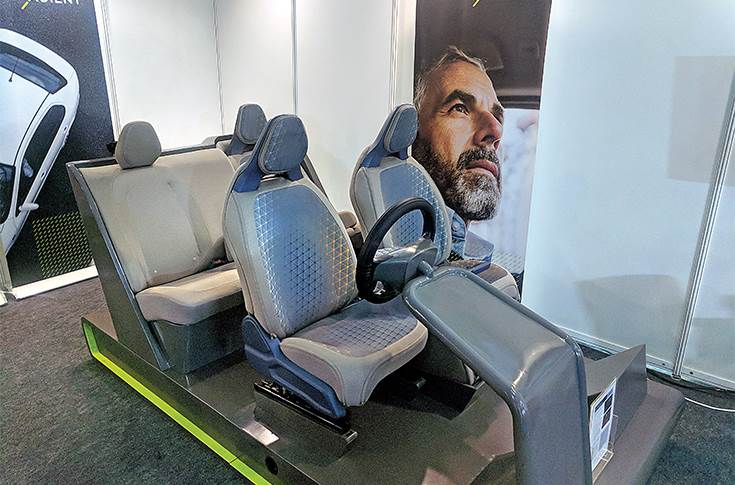
Adient Technologies' key exhibit was its AIS-1 demonstrator, conceptualised for B+, compact sedan and C-SUV segments.
A technology-agnostic policy roadmap towards a cleaner future is also something which the industry demanded, given there is a need to significantly invest in R&D for developing innovative technologies.
Overall, FISITA 2018 achieved what its overall aim is: to support and encourage the world’s engineers to achieve their goals and create solutions which continually push the boundaries of technology and improve our society, especially where they relate to mobility, safety and the environment.
(This article was first published in the 15 October 2018 issue of Autocar Professional)
RELATED ARTICLES
Branded content: HL Klemove inaugurates first Local ADAS Radar Manufacturing Unit in India, marks a significant achievement in “Make in India” initiative
The inauguration ceremony was held in the presence of Vinod Sahay, President and CPO of Mahindra & Mahindra Ltd. and Dr....
BluWheelz to 'Green Up' logistics sector
With their EVs-as-a-service solution, the startup is playing it smart with costs and looking to electrify the entire seg...
BRANDED CONTENT: Spearheading the EV revolution in India
Jio-bp is a joint venture between Reliance Industries and BP PLC where both entities have married international expertis...





 08 Nov 2018
08 Nov 2018
 11633 Views
11633 Views



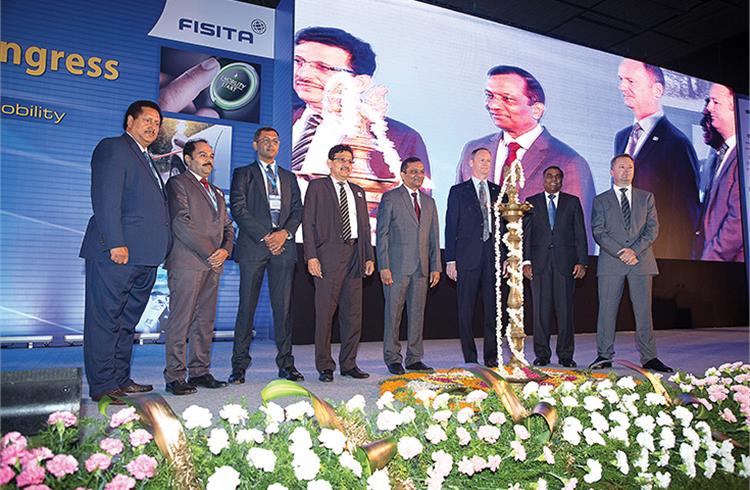
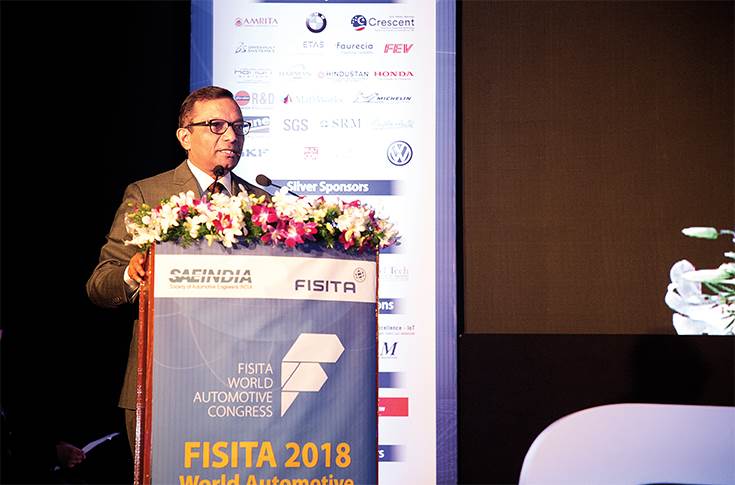
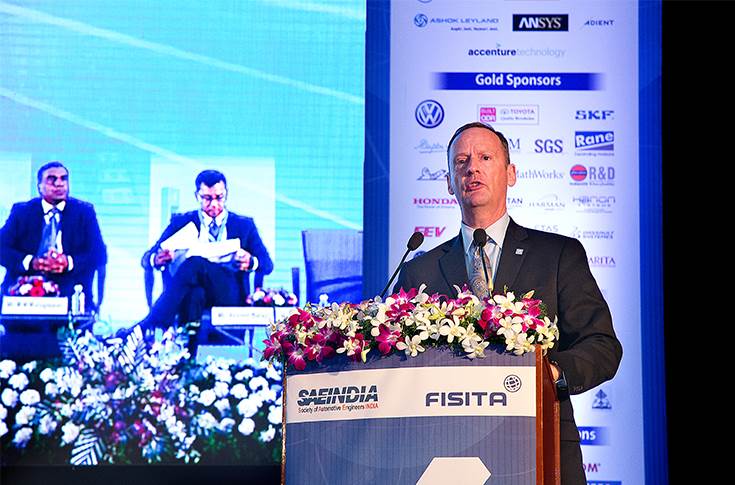
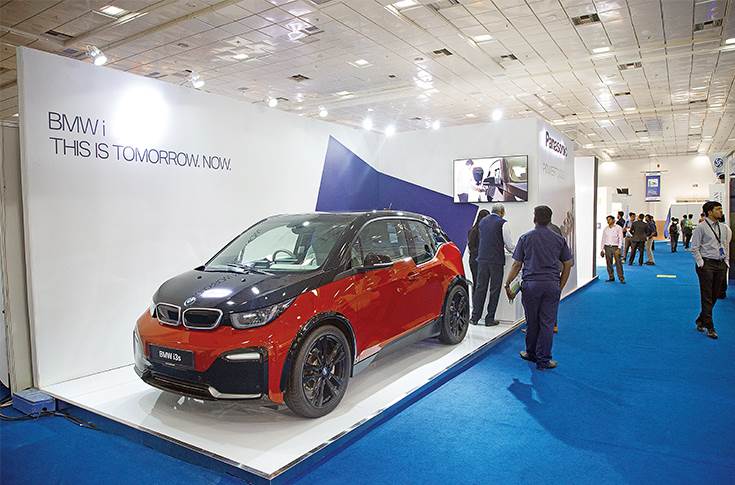
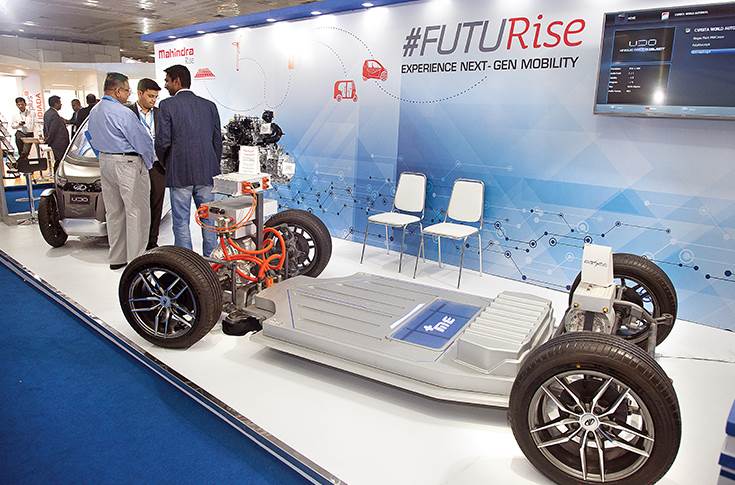


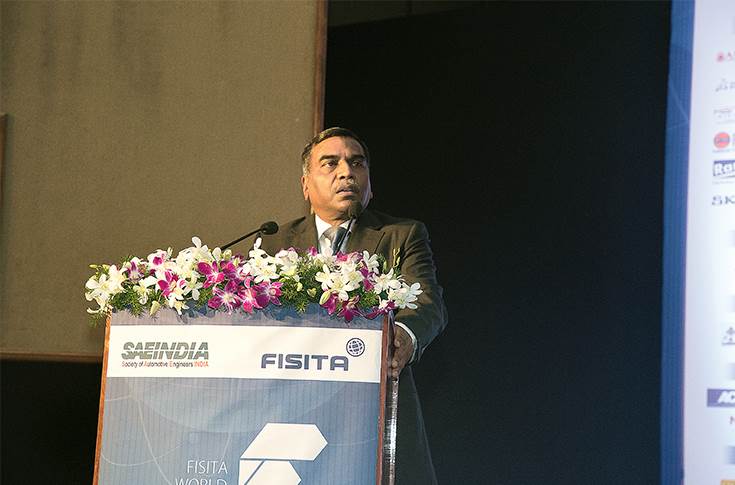

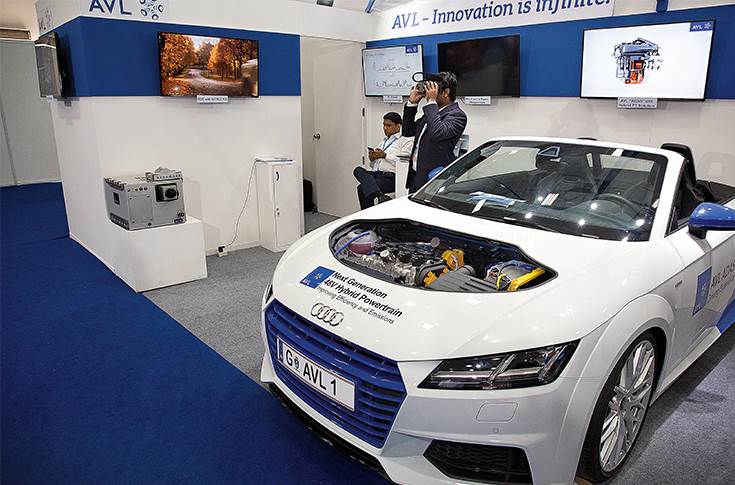


 Autocar Pro News Desk
Autocar Pro News Desk




